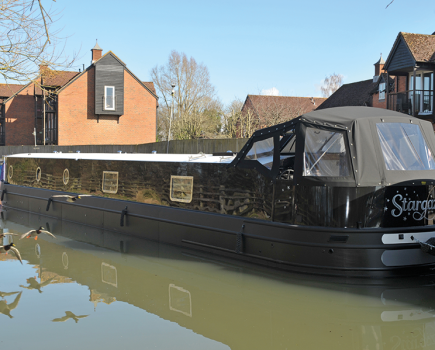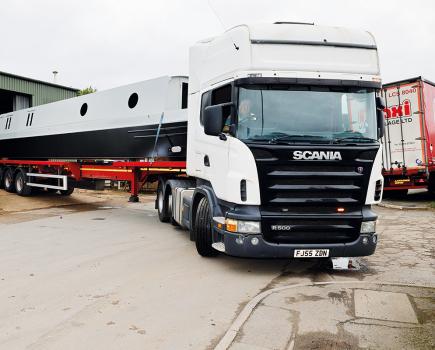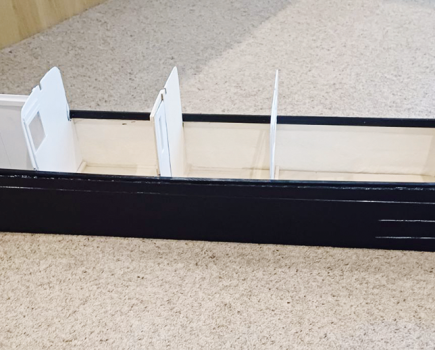Episode two of ‘Canals: Making of a Nation’ focused on Geology and the building of the Kennet & Avon Canal, one of the jewels of Britain’s canal network.
Because of the lack of geological knowledge at the time, getting it built was monumental challenge. The man hired to plot the route and oversee construction was John Rennie – he had limited experience in canal building, but was held in high regard in the world of civil engineering.
Few people know it but early canal building laid the foundations for a much deeper understanding of the earth and was a key factor in the founding of the new science of Geology at the time. We’ve highlighted some of our favourite bits from the episode that we think you might enjoy.

Caen Hill: Just outside of the trading centre of Devises are the Caen Hill Locks. In order for the Kennet & Avon Canal to be able to climb the hill, engineer John Rennie planned a series of 29 locks that is one of the steepest flights on the canal network. Because Caen Hill was so steep there wasn’t space to use the normal amount of water channels between the locks. As a result of this Rennie had to build unusually large side ponds that would replenish the water in each lock after use. The construction of the locks was such a massive undertaking that a brick works had to be built in order to manufacture the bricks used for the locks.
Bruce Tunnel: The Caen Hill Locks weren’t the only reason for the brick works being constructed, 15 miles to the east of the locks; workers were building the Bruce Tunnel. The tunnel has made our list of marvels from the episode because of the sheer ridiculousness behind the reason for its construction. It was built on the land owned by the Earl of Aylesbury, who was happy for the K&A to go through, but he didn’t want to be able to see it!
In order to appease the fussy landowner workers were forced to build the tunnel and hide the canal from view, which took a staggering two million bricks to construct.
Crofton Pumping Station: At Crofton – the K&A’s highest point – there was no natural water supply to feed the summit of the canal and it looked as if another expensive tunnel was going to have to be built. Instead, Rennie decided to use a huge pump to keep the canal topped up.
The Crofton Pumping Station was constructed to help get the water to the top level of the canal where there was no natural water supply. The Boulton and Watt beam engine inside the pumping station draws water up in its gigantic piston – each draw, draws one tonne of water – each time it rotates.
That lifts water up almost 50 foot to the highest point of the canal. The steam powered pump was capable of keeping the summit topped up but it still needed to be fed by water supply at its base. Rennie was in luck as it turned that there was a spring located nearby.

He constructed a reservoir that was fed by the spring which provided enough water to keep the whole system working.
William Smith: Smith came from humble beginnings and taught himself about surveying as a teenager. Whilst still in his early twenties he was hired by John Rennie to survey a new waterway linking K&A to a fresh coal field in Somerset. The excavation of this coal canal in 1795 allowed Smith to test theories about the rock strata. By cutting open the Somerset countryside he could see exactly how layers of rock were lying under the ground and he realised that there was an order of the strata that the rocks were in. Using these discoveries he was able to predict the location of mineral wealth underground and advice landowners about the likelihood of finding coal on their land.

In 1815 he put all of his findings together to produce the world’s first national geological map that showed the subterranean levels of England and Wales. This map was so significant that the entire mining industry was created based on it. One could argue that whenever a natural resource is discovered underground, such as coal, oil or even uranium it is because of the discoveries made by Smith.
Influence on Darwin: The discoveries made in geology from canal building, particularly those of William Smith played a part in influencing the ideas and discoveries of Charles Darwin. When Smith began his map in 1800 the common belief was that the Earth was only 6,000 years old.
Smith knew this was not possible as the fossils that he was finding in the walls of the canals he was digging were evidence that the world was much, much older. These discoveries and the variation in the fossils that were found gave root to Darwin’s theories on Natural selection and even his book ‘The Origin of The Species’.
Image(s) provided by:
Archant







